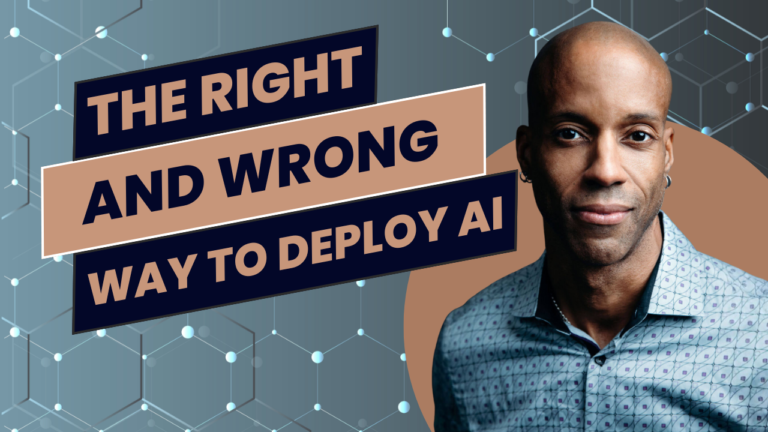Introduction
In today’s fast-evolving tech landscape, deploying artificial intelligence (AI) effectively is no longer a luxury—it’s a necessity. As more companies explore AI adoption, some charge full speed ahead while others are dipping their toes in cautiously. The truth is, AI’s potential is enormous, but without clear strategies, businesses risk alienating consumers and missing opportunities to innovate responsibly.
AI’s Impact on Consumers and Society
Younger generations, growing up in digital environments, naturally embrace AI. They’re not just used to it; they expect it. But AI’s role should be to enhance, not replace, human creativity. Businesses that understand this can tap into deeper connections with their audience. The best AI strategies put people first, using technology to deliver more personalized, creative, and engaging experiences.But this shift brings complexities. AI introduces ethical challenges and demands a transparent approach. We need ongoing conversations around equity and access. AI is powerful, but if used irresponsibly, it can create more harm than good. The future of AI must involve collaboration to ensure fairness and accountability.
Effective AI Deployment
Getting AI right isn’t just about adopting the latest tech—it’s about aligning AI with clear, evidence-based strategies. AI should be tailored to meet specific business needs, predicting trends and optimizing processes. But it’s not set-it-and-forget-it. Successful AI deployment requires continuous refinement, with feedback loops that keep the technology adaptive to new challenges. Another crucial element is collaboration. Partnering with AI experts and staying connected with academic research helps businesses stay at the cutting edge. AI isn’t a one-size-fits-all solution, and refining it requires ongoing learning.
Let’s be real—people fear what they don’t understand. So transparency is key. Businesses need to be upfront about how and why they’re using AI. Clear communication dispels myths and builds trust. But balance is critical. Consumers will lose interest if every interaction feels robotic. Maintaining human connection alongside AI tools is essential. Education is also a game-changer. Workshops, accessible information, and inviting consumers to offer feedback can demystify AI and turn skeptics into advocates. People are more likely to trust AI when they feel part of the conversation.
Managing AI’s Risks
Like any tool, AI is neutral—it’s how we use it that counts. That’s why strong regulations are necessary to ensure AI serves society in a fair and ethical way. One major risk is bias in algorithms, which can deepen societal inequalities. To prevent this, developers need to test AI thoroughly and build systems on diverse, inclusive datasets.Public awareness is also key. When people understand the risks and benefits of AI, they’re better equipped to demand ethical standards. Governments, businesses, and academic institutions must work together to keep AI development responsible, adaptable, and aligned with society’s values.
The future of AI depends on how we use it. By focusing on transparency, collaboration, and ethical practices, we can unlock its full potential while keeping its risks in check.






